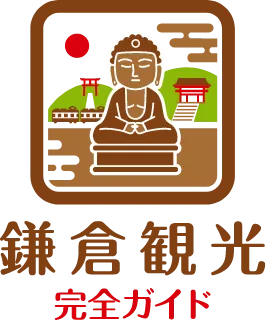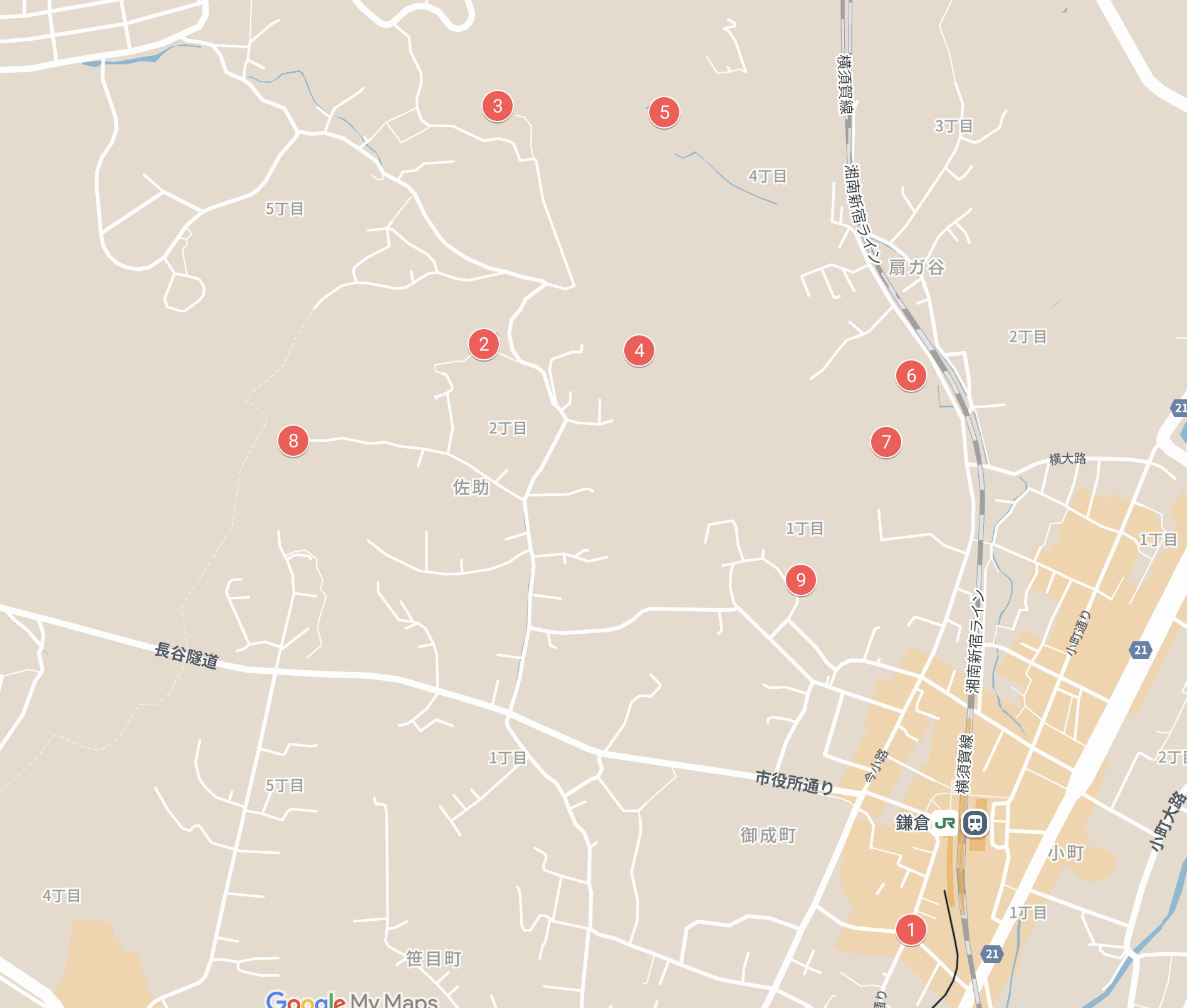AREA
B
AREA
B
Kamakura Sta. West Exit Area
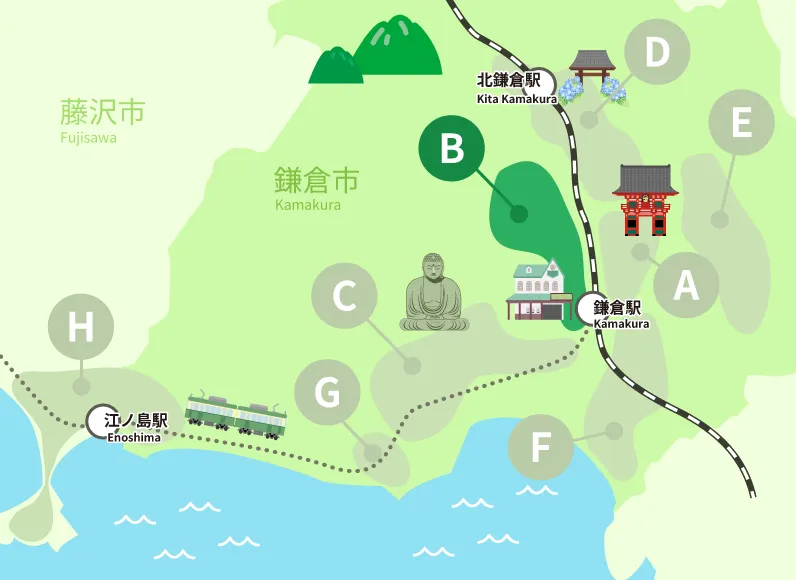
A space where the good old days and modern times intersect. Make a wish at a historic shrine, Experience local life.
Toshi’s Kamakura sightseeing map
- Onari Street
- Zeniarai Benzaiten Ugafuku Shrine
- Kuzuharaoka Shrine
- Genjiyama Park
- Kaizoji Temple
- Eishoji Temple
- Jufukuji Temple
- Sasuke Inari Shrine
- Kamakura Museum of History and Culture
- Kamakura Carving Museum
Features
The Kamakura Station West Exit area is a tranquil yet fascinating destination filled with spots where you can experience Kamakura’s rich nature and deep history.
On the way to Yuigahama, you’ll find hidden cafes and galleries that offer a glimpse into the everyday life and artistic side of Kamakura.
One of the highlights is Onarimachi Street, a charming shopping district lined with stores offering local ingredients and cafes housed in traditional old houses.
Located just a short walk from the west exit of Kamakura Station, this street gives visitors a chance to connect with the local lifestyle and enjoy a unique experience.
Additionally, the area is home to power spots such as Zeniarai Benzaiten Ugafuku Shrine and Kuzuharaoka Shrine, known for blessings like financial success and matchmaking.
Surrounded by nature, these mystical shrines offer a one-of-a-kind experience of making wishes in a serene and spiritual setting.
Genjiyama Park is another must-visit spot where history and nature coexist. This legendary area, with ties to the late Heian period, captivates visitors with its cherry blossoms in spring and autumn foliage.
It’s the perfect place to refresh in a peaceful natural environment away from the city’s hustle and bustle.
Moreover, temples like Kaizo-ji, Eisho-ji, and Jufuku-ji form an integral part of Kamakura’s spiritual landscape.
These temples offer seasonal flowers, water-related legends, and stories of historical figures such as Tokugawa Ieyasu and Minamoto no Yoritomo.
Notably, Jufuku-ji, designated as a national historic site, showcases the depth of Kamakura’s history and culture.
The Kamakura Station West Exit area is where nature, history, and daily life come together.
Every visit offers new discoveries, making it an ideal spot for strolling, relaxing, praying, and learning about history.
Sightseeing Spot
-
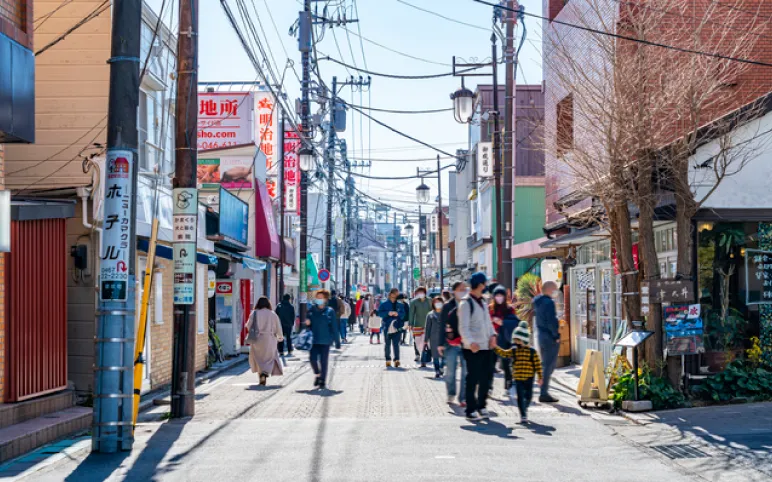
Onari Street
Kamakura's hidden charm
A gentle stroll along Onari DoriA shopping street that can be reached on foot from the west exit of Kamakura Station.
There are shops selling local ingredients and cafes located in old folk houses.
You can feel the daily life of Kamakura. -

Zeniarai Benzaiten Ugafuku Shrine
The legend of Minamoto no Yoritomo lives on
Wash your coins and pray for prosperityA unique shrine where visitors can pray for increased financial luck by washing their money. You can enjoy a mysterious atmosphere in a rich natural environment.
-

Kuzuharaoka Shrine
A shrine that protects the secret of success in love
A green hideaway in KamakuraIt is known as a power spot for love fulfillment and matchmaking, as well as a place of worship for the deity of learning. The site features three special stones where visitors traditionally make their wishes, along with seasonal flowers that captivate all who visit. This is one of Kamakura's most popular attractions.
-
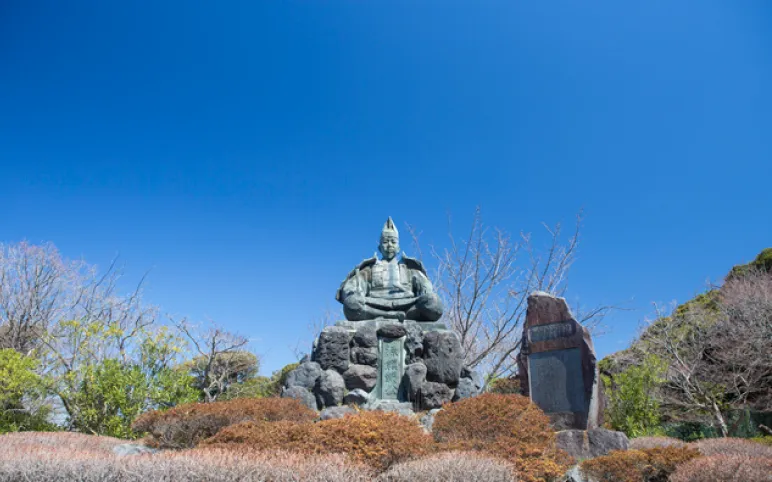
Genjiyama Park
Feel the breath of history
A natural paradiseSurrounded by the rich nature of Kamakura, it is a legendary place where Minamoto no Yoritomo's ancestors prayed for victory at the end of the Heian period. Located next to Kewaizaka, a national historic site, it forms one of Kamakura's Seven Cuts as a place where nature and history come together. There is a statue of Minamoto no Yoritomo in the central square, and it is known for its beautiful seasonal flowers, especially cherry blossoms and autumn leaves. It is a popular place for walking and resting in Kamakura, where you can enjoy history and natural beauty.
-
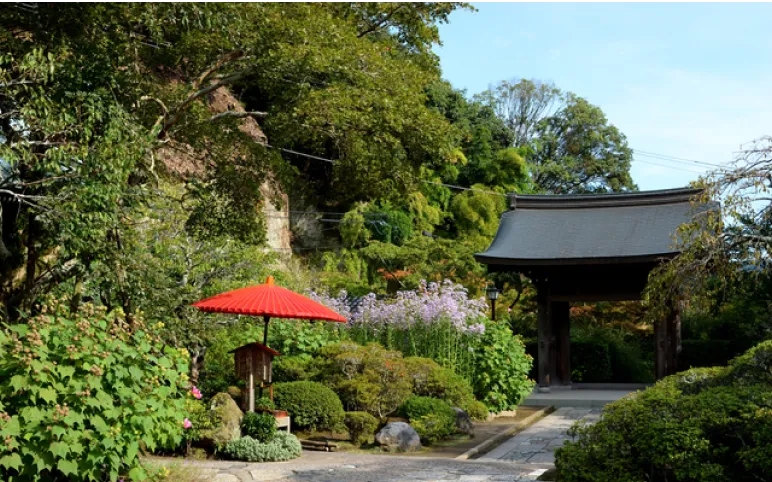
Kaizoji Temple
A tranquil paradise where the legend of seasonal flowers and water lives on.
A quiet Zen temple, it is also known as the ``Flower Temple'' and ``Water Temple,'' and is characterized by seasonal flowers and legends related to water. In particular, the Yakushi-do Hall, which enshrines Yakushi Nyorai, has a rare statue of Yakushi Nyorai, providing peace and relaxation to visitors along with the beautiful natural environment. During the autumn leaves season, the road to the temple forms a colorful tunnel, giving visitors an unforgettable experience.
-
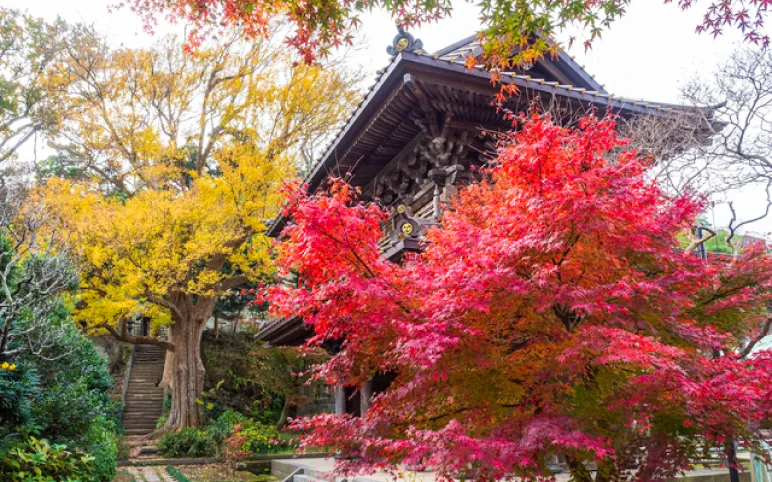
Eishoji Temple
The protection of the Tokugawa family that transcends time
The legacy of the nunnery that lives on in KamakuraIt is the only nunnery in Kamakura, and was built by Okatsu, a concubine of Tokugawa Ieyasu. It received support from the Mito Tokugawa family, and its architectural beauty reflects the influence of the Tokugawa family. In particular, the hall with the crest of a trefoil hollyhock is symbolic, and is called the ``Mito-sama Nunnery.'' The Sanmon gate and the chief priest's cemetery, which were rebuilt in 2011, convey the depth of history to visitors.
-
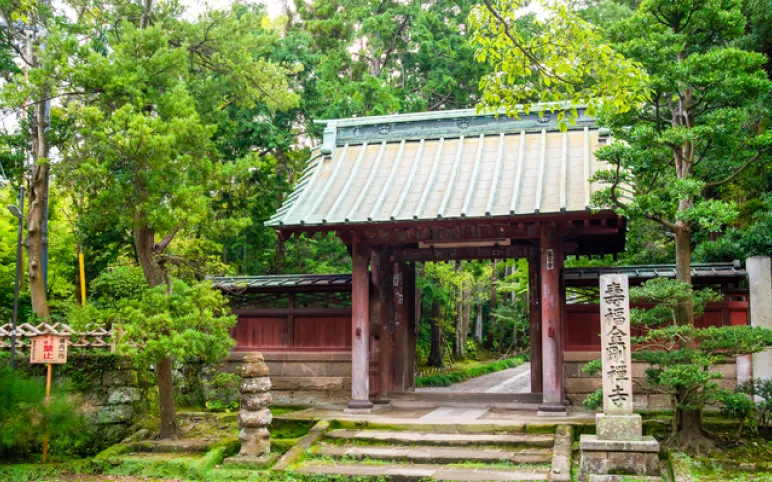
Jufukuji Temple
A stone-paved path invites you to take a walk through the history of Kamakura
It was founded by Minamoto no Yoritomo's wife, Masako Hojo, and was built to mourn for Minamoto no Yoritomo's body. Inviting Eisai, who spread the culture of tea, it developed as a Zen temple. It has also been designated as a nationally designated historic site as one of the ``Kamakura Five Mountains''. With its beautiful stone-paved approach and graves of famous people, it is a valuable temple that conveys to visitors the beauty of tranquility and history.
-

Sasuke Inari Shrine
The Path of Success Guided by Red Torii Gates
Sasuke Inari Shrine is a hidden gem in Kamakura, offering visitors prayers for success and good fortune. The enchanting pathway of red torii gates feels like an entrance to another world. The shrine is deeply connected to Minamoto no Yoritomo, who prayed here and received divine assistance from the Inari deity before his victory over the Heike clan, earning it the title of "God of Success."
Nestled within lush greenery, the shrine is believed to grant blessings for career advancement, business prosperity, recovery from illness, and romantic relationships. Many visitors come to this serene sanctuary to make their wishes and experience its mystical charm. -
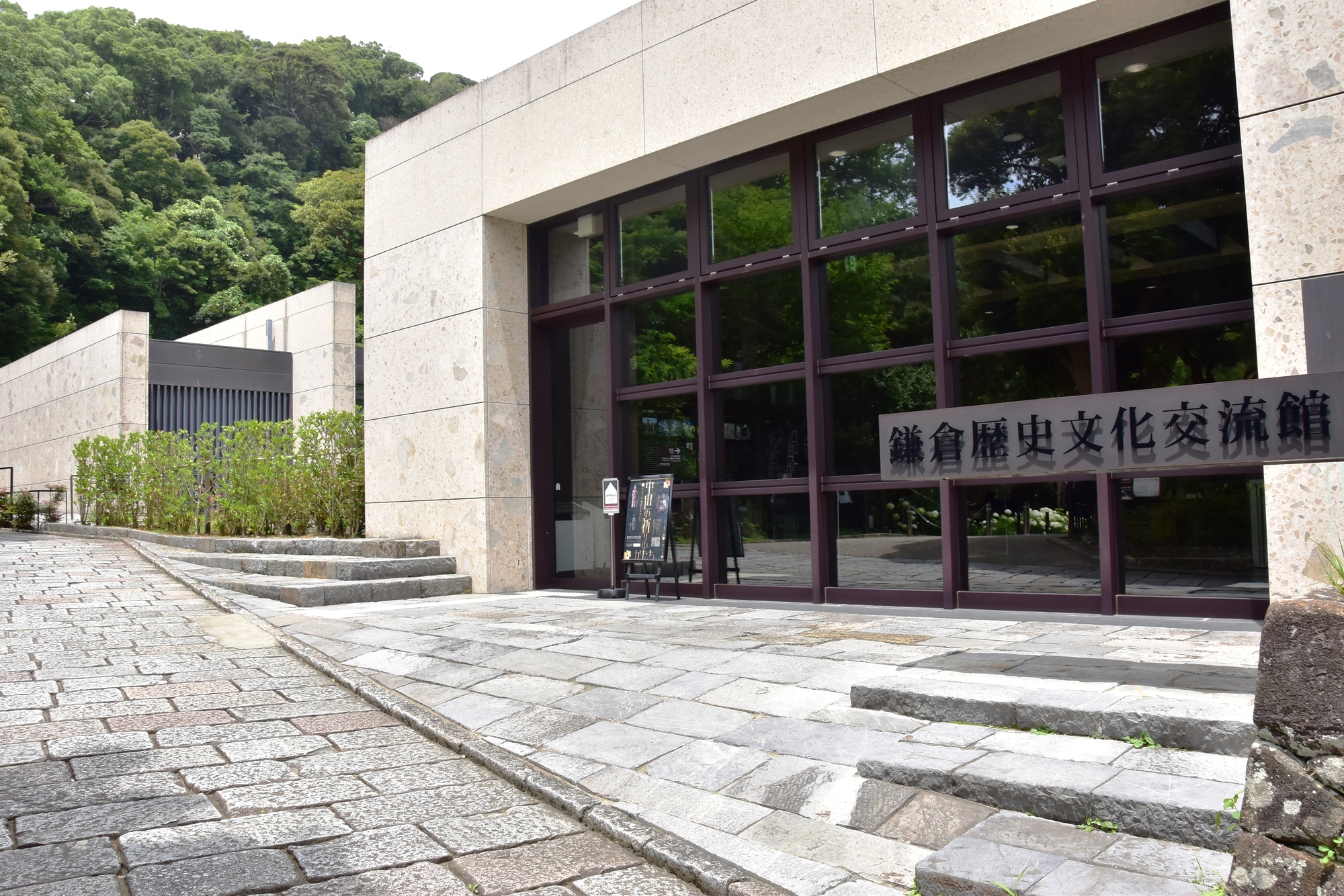
Kamakura Museum of History and Culture
A Museum Where History Meets the Future—A Space of Light and Knowledge
The Kamakura Museum of History and Culture is a cultural facility where visitors can experience Kamakura’s history through immersive exhibitions that combine cutting-edge digital technology with a sophisticated architectural space designed by world-renowned architect Sir Norman Foster. Using VR and projection mapping, the museum recreates the development of Kamakura as a medieval city and its iconic landmarks, making it enjoyable for both beginners and history enthusiasts. From the hilltop, visitors can admire breathtaking views of Sagami Bay, while the courtyard garden transforms beautifully with the seasons, offering a moment of serene inspiration.
-
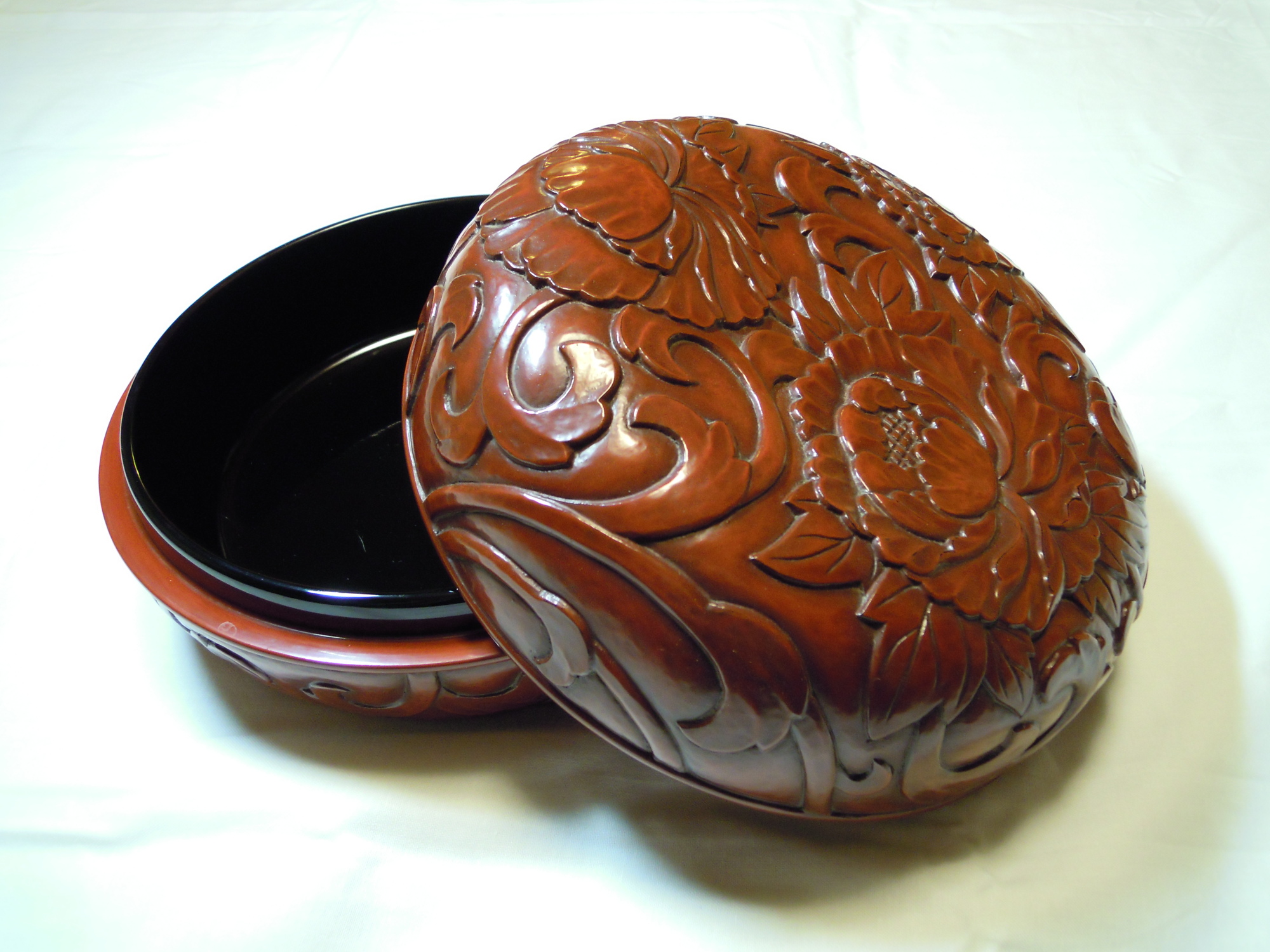
Kamakura Carving Museum
A Special Experience of Craftsmanship and Beauty: Discovering the World of Kamakura-bori
The Kamakura-bori Craft Museum offers a unique opportunity to experience the beauty of Japanese traditional crafts through the sale of Kamakura-bori carvings and hands-on workshops. As a traditional craft designated by the Minister of Economy, Trade and Industry, visitors can enjoy exhibitions and lacquerware experiences while learning about the history and craftsmanship behind Kamakura-bori. The museum provides a special moment to appreciate the artistry of this renowned craft.
